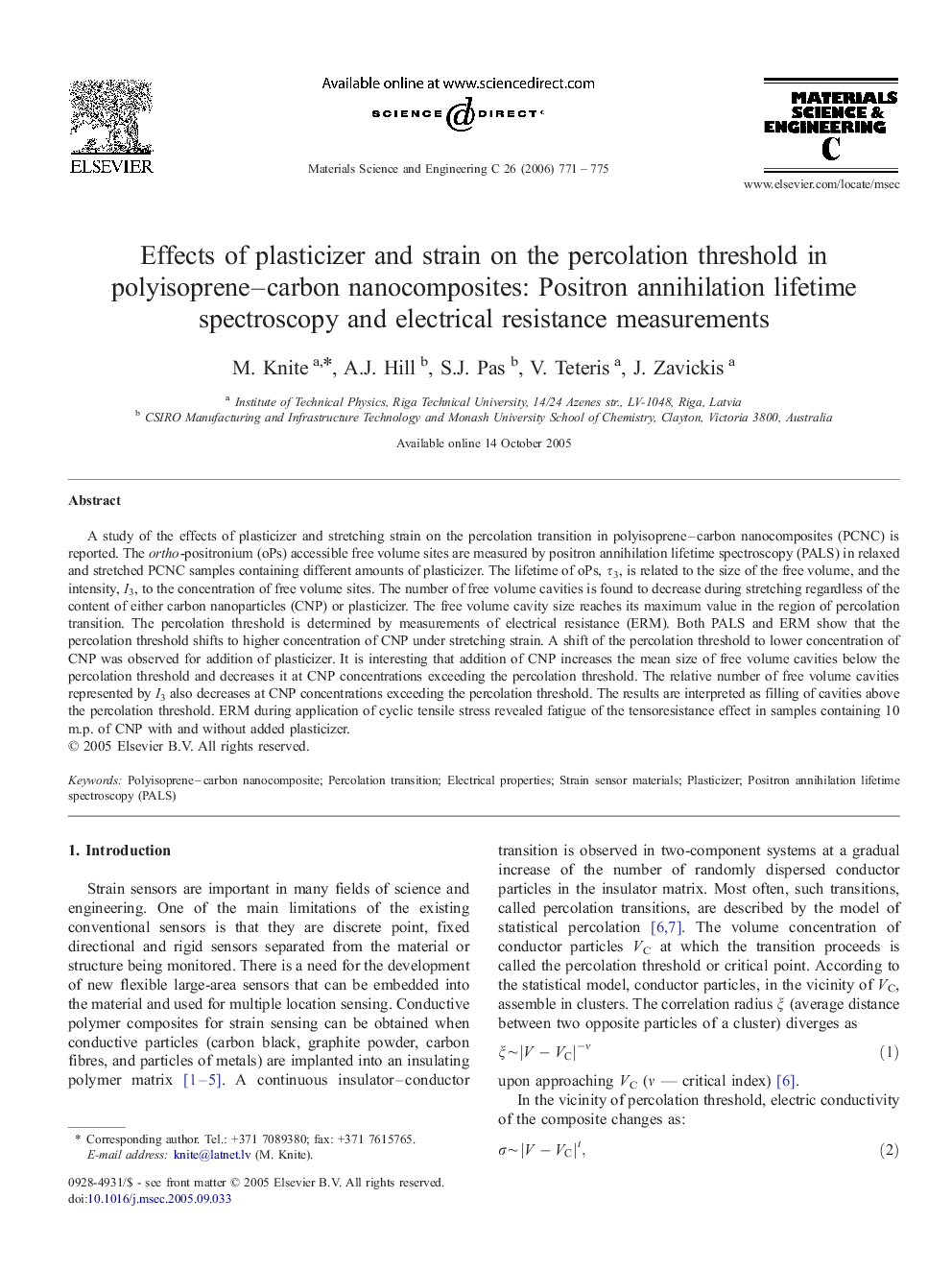| Article ID | Journal | Published Year | Pages | File Type |
|---|---|---|---|---|
| 1430586 | Materials Science and Engineering: C | 2006 | 5 Pages |
A study of the effects of plasticizer and stretching strain on the percolation transition in polyisoprene–carbon nanocomposites (PCNC) is reported. The ortho-positronium (oPs) accessible free volume sites are measured by positron annihilation lifetime spectroscopy (PALS) in relaxed and stretched PCNC samples containing different amounts of plasticizer. The lifetime of oPs, τ3, is related to the size of the free volume, and the intensity, I3, to the concentration of free volume sites. The number of free volume cavities is found to decrease during stretching regardless of the content of either carbon nanoparticles (CNP) or plasticizer. The free volume cavity size reaches its maximum value in the region of percolation transition. The percolation threshold is determined by measurements of electrical resistance (ERM). Both PALS and ERM show that the percolation threshold shifts to higher concentration of CNP under stretching strain. A shift of the percolation threshold to lower concentration of CNP was observed for addition of plasticizer. It is interesting that addition of CNP increases the mean size of free volume cavities below the percolation threshold and decreases it at CNP concentrations exceeding the percolation threshold. The relative number of free volume cavities represented by I3 also decreases at CNP concentrations exceeding the percolation threshold. The results are interpreted as filling of cavities above the percolation threshold. ERM during application of cyclic tensile stress revealed fatigue of the tensoresistance effect in samples containing 10 m.p. of CNP with and without added plasticizer.
